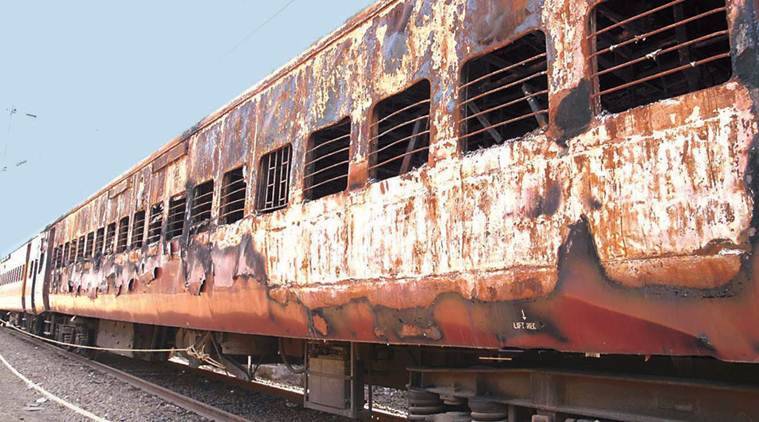The streets of Gujrat ran rampant with uncontained violence and carnage during February 2002 and March 2002. The events which are collectively referred to as the “Godhra Riots” or the “Gujarat Riots” was an instance of the complete collapse of the state machinery in the face of the most brutal instance of communal violence witnessed in Indian history. The riots which began on 28 th February 2002, saw the killing of over 2000 people and the displacement of more than 1,20,000 people in only three days. The figures are a conservative estimate at best. The violence was heavily concentrated in the city of Ahmedabad but soon spread to all areas of the state. Hitherto peaceful cities and villages that had never been a participant in communal violence were also affected. The violence spread to all corners of the state including Godhra, Surat, Rajkot, Bharuch, Vadodara, Gandhinagar, Sabarkant, Kheda, Junagadh, Panchmahals, and Mehsana. Out of these areas – Godhra and Ahmedabad saw the worst of the massacre.
The initial assessment of the events pertaining to the Godhra riots converged at certain troubling conclusions. While the methods operationalised and adopted during the riots were not only exceptional and distinctive – unique to the instances of communal violence witnessed in India but the events also saw the complete breakdown of the state apparatus in responding to the events. The state government and Indian Police Force alike.
The instigator of the riot was the burning of the Sabarmati Express train at Godhra that was carrying Hindu religious workers known as Karsevaks while they were returning from Ayodhya, an already disputed site that caused widespread communal violence between Hindus and Muslims in the 1990s. The burning of the train resulted in the declaration of a state-wide strike by the Vishwa Hindu Parishad (VHP) and the consequent violence that followed between the two communities.
The careful study of the events that unfolded in Gujrat provides sufficient information to furnish that the riots were not a spontaneous eruption in Ashis Nandy’s words of “redemptive violence” that the Hindus unleashed against Muslims. Riots are rarely spontaneous and require immense coordination and direction. The carnage that unfolded in Gujarat point to a well-planned, co-ordinated and systemic attack on Muslims. The lack of state support in the containment of the violence and the active part played in the riots by prominent members of the government leads to the events in Gujrat being categorized as a pogrom of ethnic violence being committed by one community against another community, with state knowledge and approval. Thus, making the events as a political phenomenon as much as a communal phenomenon.
The undeniable evidence of Godhra being a state-sponsored pogrom where the state not only abetted and protected the executioners of the violence but was also involved in the planning and implementation of the violence was most disturbing. The riots brough to attention the
larger edifice of politicisation that was going on in the state of Gujrat. Gujarat had increasingly been sensitized and politicized by the workings of the Sangh Pariwar for a while before the riots of 2002. The open declaration of the Bhartiya Janata Party (BJP) along with the Vishwa Hindu Parishad (VHP) and the Rashtriya Swayam Sevak Sangh (RSS) (collectively designated the Sangh Pariwar) of Gujrat to be a “laboratory of Hindutva” can be seen as an additive force to the politicization of the society along religious lines. The manipulation of these politicised religious identities played an important role in unencumbered electoral gains by the BJP in the upcoming state election.
The Godhra riots had apparent features that made it distinguishable from the communal strife that existed in Gujarat previously and the communal rioting that took place across India. Firstly, a complete denial of citizenship rights and human rights to a minority group by the state and its bodies was witnessed. Secondly, the agential use of violence by Hindu women who actively participated in the looting and carnage was witnessed newly. Thirdly, the sexualisation of violence especially towards women and children was at an unprecedented level. Pregnant women had their foetus ripped out and where then murdered. Electrocution by flooding homes of Muslim families was another unique method observed during the riots.
Lastly, the participation of tribal communities in the violence against Muslims was a new given. This brough to the light the increasing hinduisation of the tribal communities that was happening in Gujrat.
The compliance of the police forces in the attacks across urban and rural Gujrat, followed by the increasing evidence of state support for the events was followed by a partial and committed judicial process for the victims of the programme. The Gujarat High Court and the
apparently independent inquiry committee established by the state government under the leadership of Justice G.N. Nanavati did little to ensure that the victims would get justice. The Supreme Court also failed the citizens of India and was not able to mitigate concrete justice
to the victims of the massacre.
However, the civil society of Gujarat including several NGOs and organisations were relentless in their perusal of the riots and persistently demanded justice. An independent body was constituted to conduct an inquiry into the events of the riots but despite providing ample evidence and testimonials, justice was hard to find. The National Human Rights Commission was a vehement critique of the excesses of the riots and the complete disregard displayed by the Gujarat High Court.
The subversion of minority rights through the denial and complete breakdown of constitutionally accorded rights to citizens as observed in Gujrat during 2002 has found national resonance in contemporary times. India’s democratic apparatus is decaying and some of the worries that were voiced in 2002 seem almost prophetic given present circumstances. The Godhra riots remain a stark reminder of the failure of the Indian State – the judiciary, the executive and the legislation.
Image – The Indian Express

